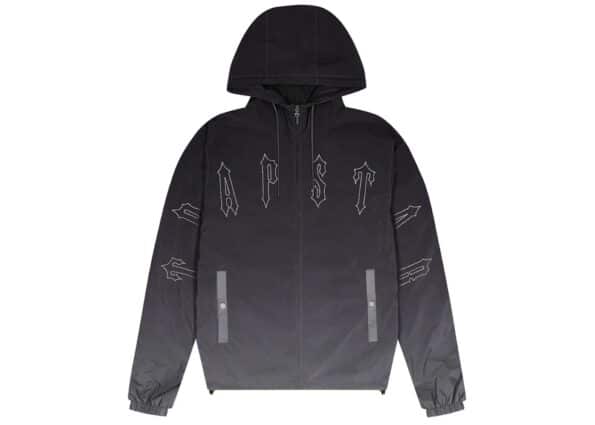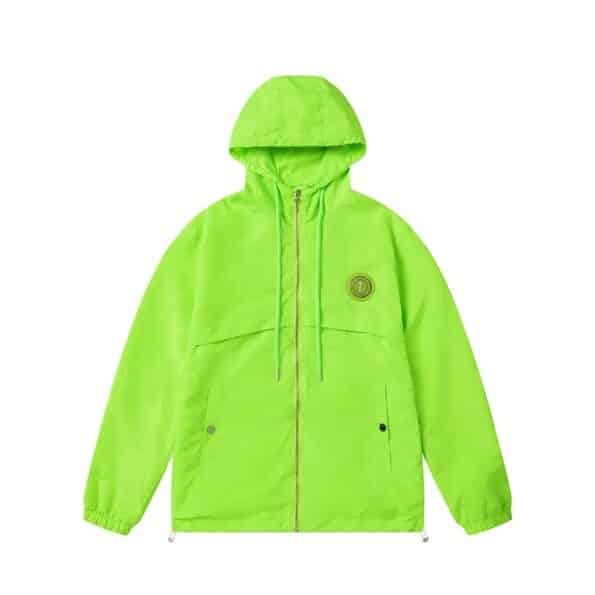7 Times When You Should Use a Trapstar Windbreaker
When it comes to versatile outerwear, the Trapstar windbreaker is a wardrobe essential that often goes overlooked. Lightweight, stylish, and functional, it’s the ultimate go-to jacket for those in-between weather days. Whether you’re running errands, hiking up a trail, or simply braving a breezy commute, a windbreaker keeps you comfortable and protected.
But when is the right time to wear a windbreaker? And more importantly, when should you skip it? This guide will explore what makes a windbreaker special, its key benefits, and practical advice on how and when to make the most of this handy jacket.
What Is a Windbreaker?
A windbreaker is a lightweight jacket designed to shield you from the wind and light rain. Made primarily from synthetic materials like nylon or polyester, it’s built to block wind while still allowing for breathability. Windbreakers are not insulated, making them perfect for mild weather conditions rather than freezing cold days.
Common Features of a Windbreaker
- Adjustable hoods: For added protection in windy or drizzly conditions.
- Elastic cuffs and hem: Ensures the jacket stays snug and prevents cold air from seeping in.
- Water-resistant zippers: Protects against light rain and moisture.
- Packable designs: Many windbreakers fold into their own pockets for easy storage on the go.
By combining practicality with portability, windbreakers have become a staple for outdoor enthusiasts, commuters, and even style-conscious individuals who need a functional yet fashionable layer.
Key Benefits of a Windbreaker
1. Provides Wind Protection
The primary purpose of a windbreaker is to act as a barrier against cold gusts of wind. Whether you’re cycling through a breezy neighborhood or hiking along a ridge, the right windbreaker will keep the wind from cutting through your clothes.
2. Breathability and Comfort
Unlike heavier jackets or coats, Trapstar windbreakers are breathable, allowing air circulation and preventing you from overheating. This makes them ideal for outdoor activities like running, jogging, or hiking, where you need protection without feeling weighed down.
3. Lightweight and Packable
Need an emergency layer for unpredictable weather? Windbreakers are ultra-light and easy to carry, often compact enough to fit into backpacks or handbags. Perfect for commuting, travel, and last-minute adventures.
The Best Times to Wear a Windbreaker
1. Mild to Moderate Windy Conditions
Whether it’s a crisp fall morning or a breezy spring afternoon, windbreakers are perfect for days when the wind is strong enough to chill you but not cold enough for a winter coat.
2. Outdoor Activities
From running to cycling to casual hiking, a windbreaker is an essential companion for anyone engaging in outdoor sports or activities. Its lightweight design ensures that you stay comfortable and mobile, while protection against wind prevents discomfort.
3. Spring and Fall Seasons
These transitional seasons often bring unpredictable weather sunny one moment, breezy or drizzly the next. A windbreaker offers just the right amount of protection while keeping you stylish.
4. During Travel or Commuting
For those who commute by bike, bus, or on foot, a windbreaker is a lifesaver. It’s easy to pack, comfortable to wear, and provides reliable protection on quickly changing days. It’s also perfect for travel—whether you’re exploring a windy coastline or preparing for unpredictable city weather.
When Not to Wear a Windbreaker
Knowing when not to use a windbreaker can be just as important as knowing when to wear one.
1. Extreme Cold Weather
Windbreakers are not designed to keep you warm in freezing temperatures. They lack insulation, which means they’re not ideal for winter days or snow. Instead, opt for a heavy-duty winter coat to stay protected.
2. Heavy Rain
While most windbreakers are water-resistant, they are not fully waterproof. Prolonged exposure to heavy rain will leave you soaked. For rainy conditions, switch to a waterproof rain jacket instead.
How to Choose the Right Windbreaker
When picking a windbreaker, consider the following factors to make sure it fits your needs:
1. Material Matters
Look for durable, breathable, and water-resistant materials like nylon or polyester. If you expect light rain, water-resistant coatings will be a lifesaver.
2. Fit and Comfort
Make sure the jacket fits well without being too tight. You should have enough room for layering underneath if needed, and it shouldn’t restrict your movement.
3. Added Features
Windbreakers come with a variety of practical add-ons, such as adjustable hoods, zippered pockets, and elastic cuffs. Choose the features that best suit your lifestyle and activities.
Windbreaker Alternatives
When a windbreaker isn’t the right fit for your needs, consider these alternatives instead:
1. Lightweight Shell Jackets
Ideal for activities requiring more durability and weather resistance. Shell jackets offer better protection against tougher outdoor conditions while retaining lightweight properties.
2. Rain Jackets
For heavy rain, a fully waterproof rain jacket is the better option. These jackets are designed to keep you completely dry even during the worst downpours.
Why Every Wardrobe Needs a Windbreaker
Windbreakers are more than just practical—they’re adaptable and stylish, making them a must-have for anyone who faces mild wind or light rain in their daily life. From sports to streetwear, these jackets offer protection and comfort without compromising on mobility or style.
Whether you’re an outdoor enthusiast tackling windy mountain trails, a commuter braving city breezes, or a fashion-conscious individual seeking a lightweight layer, a windbreaker is a reliable choice.
Make the Most of Your Windbreaker Today
With their lightweight and functional design, windbreakers are the unsung heroes of transitional weather. If you don’t already own one, it’s time to add this dynamic jacket to your wardrobe—it just might become your new favorite outerwear companion.











Pingback: Why Is Trapstar so Famous?